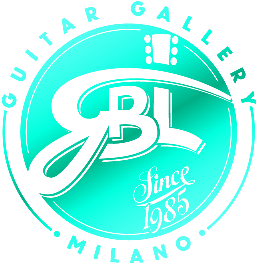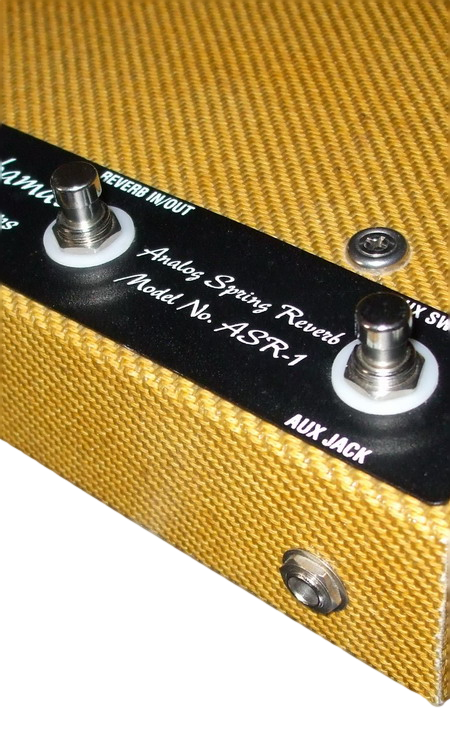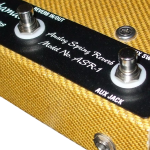The Original Reverbamate by VanAmps, the reverb that started it all! Designed old school, for use with vintage amps of the tweed, brown and blackface eras, or any amp with two separate channels. Many tube amps built in the 50’s and 60’s had multiple input channels for use with accordions, microphones and of course guitars. The Reverbamate takes full advantage of the available channels by offering two outputs, one dry and one wet so that the user can essentially “mix” these outputs at the amp. In this manner one can use the tone and volume controls on the amp to tweak the wet and dry signals independently, allowing for total control over your sound. What creative musician or studio engineer wouldn’t want this type of flexibility? Reverbamate is a solid-state analog spring reverb pedal that runs on two nine-volt batteries or supplied power supply. It uses a three-spring 9” MOD™ reverb tank, considered to be one of the most vintage sounding tanks available. The dry output is a hardwired connection from the guitar input, ensuring guitar tone integrity. Internal circuitry is impedance matched for balanced levels and no “rolled off highs”. The Reverbamate employs a bipolar fully regulated power supply for increased headroom and low noise operation.
Specifications:
- Dimensions: 10”W X 6”D X 2”H
- Weight: 3 lbs. w/power supply
- Three-spring MOD™ reverb tank
- Output Level and Dwell controls
- AUX jack and switch: An additional foot switch control for your amp’s tremolo or other non-momentary switching duties. See manual for details.
- Power requirements: 12VAC, Current draw: 125ma peak, 2-9 volt batteries.
- Supplied with 120VAC/1000ma power supply (230VAC available)
- Optional 9VDC/300ma Power Output Jack (2.1mm)
- Pedal Deck compatible.
• Try this, put the dry signal into the normal channel, the reverb signal into the vibrato channel, the vibrato only affecting the reverb signal makes a very real sounding echo, which you can adjust in different ways. You can actually adjust the controls on both the amp(speed and intensity) and the Reverbamate to simulate decay, interval, etc. It’s really wild! One channel Hook-up For those using a one channel two input amp, here are some tips to get the most from the Reverbamate. • Adjust the amp for the desired direct sound first, then add the degree of Dwell depending on how “wet” you want the effect. Once you have those set, bring up the output level on the Reverbamate to match the strenght of the direct sound from the amp. Level matching of the two signals is the most important issue to be aware of. Don’t expect the reverb signal to have that “in your face” impact that the direct signal has, using your volume control on your guitar to roll off the direct signal will help the reverb compete at the amp. Best advice is to experiment using all the controls at hand. • This is more of a waring than a tip, but, don’t try to Y-cable the two outputs from the Reverbamate into one input of the amp. You will get a horrible feedback loop that could smoke your amp speaker in a hurry. General precautions Although the Reverbamate is engineered to be stable within reason, it will “crash” when dropped, kicked, or thrown around. Please handle the unit as you would a fine microphone or other precision instrument. It is best to use the Reverbamate on a stable surface, away from the amp it is used with to prevent possible acoustic feedback. The Reverbamate is made for high impedance instrument sources, guitars, accordians, HI-Z microphones etc. Line level sources such as tape outputs and preamp outs could potentially overdrive the inputs and cause damage. It is recomended that if attempting to use the Reverbamate in this mannor, make sure there is a gain control on the source device so that the output signal can be controlled before the Reverbamate’s input.


